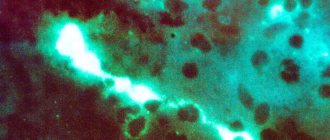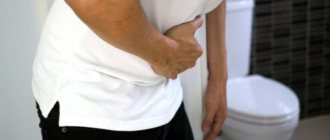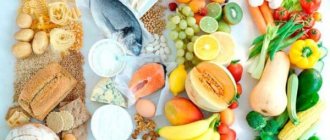11/27/2019 Article
- general characteristics
- Table "Do's and Don'ts"
- Menu for the week
The indication for the use of the “8 table” diet is varying degrees of obesity in conditions of performing mental or physical labor. When prescribing a diet, there should be no complications from the digestive organs, circulatory system and other systems requiring special diets.
General rules
Obesity is a pathology characterized by increased deposition of fat in the body, leading to excess weight. There are many types of obesity, but now we are talking about nutritional obesity, in which obesity is the leading symptom of the disease, and not a consequence or symptom of nervous or primary endocrine diseases (diabetes , hypothyroidism , Itsenko -Cushing syndrome ).
Nutritional obesity develops when calorie intake exceeds the body's energy expenditure and is characterized by a gradual increase in body weight with a relatively uniform distribution of subcutaneous adipose tissue.
There are 4 degrees of obesity:
- at stage I, the actual body weight exceeds the norm by 15-29%;
- at stage II by 30-49%;
- at stage III – by 50-100%;
- at stage IV – more than 100%.
Everyone can determine approximately their normal weight using Brock's formula (height in centimeters minus 100). The fundamental method of treating obesity is diet, combined with physical activity.
The main diet for obesity is a diet with reduced energy value - therapeutic Diet No. 8 ( Table No. 8 according to Pevzner) and its variants 8A and 8o. The level of modification of the energy intensity of the diet is determined by the degree of obesity and the individual energy needs of the patient’s body, taking into account the level of physical activity, age, gender, and labor intensity. The energy value of the main diet varies between 1700-1800 Kcal (90-110 g proteins of which 60% are animal, 80-85 g fats - of which 30% are vegetable and 150 - 170 g carbohydrates); sodium chloride consumption is limited to 5-6 g/day; free liquid - at the level of 1-1.5 liters.
The protein content in the diet should be within normal limits and provide 15–20% of the total calorie intake with a slight predominance of animal proteins. Various types of legumes (peas, lentils, beans) and soy products are mainly used as a source of vegetable protein. Animal proteins are provided by including lean meats (up to 150 g/day) in the diet - veal, beef, chicken, rabbit, turkey, limiting pork and excluding fatty meat (duck, goose), as well as meat products (ham, sausage, canned food) ). Only low-fat varieties of fish are used. It is useful to include seafood (squid, shrimp, mussels).
When compiling a diet, it is important to completely exclude quickly absorbed carbohydrates (sugar, honey, jams, sweets, preserves), which can be replaced with sweeteners ( saccharin , aspartame ). The use of sweeteners ( fructose , xylitol , sorbitol ) that have a sufficiently high energy value is impractical. It is recommended to distribute carbohydrates evenly between all meals. It is recommended to use foods with a low glycemic index in the diet. Bread is limited to 100 g per day or excluded altogether.
In order to create a feeling of fullness in the diet, the consumption of foods containing a lot of dietary fiber (up to 30-40 g/day) is increased - dietary varieties of bread, raw vegetables, fruits, grains, bran (barley, oat and wheat). These products are low in calories and have a large volume.
Fresh cucumbers
Radishes, fresh cucumbers, all types of cabbage, zucchini, pumpkin, turnips, and tomatoes are widely included in the diet, and it is recommended to consume them partially raw. Dishes made from green peas, potatoes, carrots, beets, rutabaga (up to 200 g/day), as well as pickled and salted vegetables are limited.
It is extremely important to control in the diet not only the quantity, but also the quality composition of fat. When limiting fat to 30% of the total daily calorie intake through the use of predominantly low-fat/low-fat foods, it is important to maintain an equal ratio between mono/saturated and polyunsaturated fatty acids. The diet includes low-fat milk and fermented milk products, as well as low-fat cottage cheese, both in its natural form and in the form of puddings, cheesecakes, and casseroles.
Avoid sweet cheeses, cream, fatty cottage cheese, fermented baked milk, fatty cheeses, and baked milk. It is important to avoid including hidden fats in your diet, such as those found in smoked meats, offal, sausages, cheeses, ice cream, nuts, confectionery, and cookies. omega-3 PUFAs in the diet , which are rich in flaxseed and soybean oil, halibut, and capelin.
It is important to provide the diet with sufficient content and ratio of minerals and trace elements, vitamins . It is extremely useful to include foods rich in potassium salts (seafood, soybeans, potatoes, beans, dried fruits, cabbage, black currants, apricots) and magnesium (buckwheat, carrots, rose hips, bran), iodine (seafood, seaweed), antioxidant vitamins ( E , A , C ) - vegetable oils, rosehip decoction, fruits, berries and vegetables.
Salt intake is limited to 5 g/day. At the same time, in the presence of severe persistent hypertension , salt may not be added to food.
All foods that stimulate the appetite (savory snacks, seasonings, strong broths and sauces), as well as alcoholic drinks, are excluded from the diet.
Drinking regimen - 1.5 liters on average per day in the form of mineral and drinking water, herbal teas, unsweetened fruit, vegetable and berry juices. It is recommended to drink water when you feel hungry, which helps suppress it for a while.
Against the background of the diet, it is recommended to carry out fasting days (fruit and vegetable, cottage cheese and kefir) 1-3 times a week. Culinary processing of products involves cooking food mainly boiled, steamed and stewed using appropriate technologies.
Varieties
At higher (3-4) degrees of obesity, varieties of Diet 8 with reduced energy consumption of the diet are prescribed.
Diet No. 8A - energy value is reduced to 1200-1300 Kcal (proteins -80 g, of which up to 70% are of animal origin; fats -60 g, of which 30-35% are vegetable fats and carbohydrates - 130 g). Fats are limited mainly due to vegetable fats and carbohydrates by excluding simple and limiting complex carbohydrates. Free fluid intake is reduced to 0.8–1.2 l/day.
If Diets No. 8 and 8A are insufficiently effective (for grade III-IV obesity), Diet No. 8o . Energy value is 600-800 Kcal (40-50 g - proteins; 30-40 g - fats and 50-70 g - carbohydrates). It is prescribed for a short period (up to one month) and is carried out only under the supervision of doctors in a hospital.
At the same time, fasting days per week are practiced: apple (up to 1.5 kg of apples/day), cottage cheese (500 grams of low-fat cottage cheese with 2-3 glasses of green tea), watermelon (up to 1.5-2 kg of watermelon pulp), kefir (1.5 liters of kefir/day) and others).
When using Diets 8A and 8o , you should not start fasting immediately with very low-calorie diets. Start with a moderately reduced Diet No. 8 and then gradually switch to low-energy diets. This will allow the body to gradually adapt to a low-calorie diet and avoid such a phenomenon as “food depression.”
When prescribing low-calorie diets, it is necessary to monitor not only weight, but also the general condition of the body. If side effects appear, such as high fatigue, weakness, nausea , cold intolerance, the characteristic odor of acetone, diarrhea / constipation , dry skin, dysmenorrhea / amenorrhea , heart rhythm disturbances, it is necessary to begin exiting such a diet.
Authorized Products
Bran and black bread are allowed in the diet (up to 100 g/day). Soups are prepared mainly with vegetable broth, and 1-2 times a week soups with weak, low-fat meat or fish broth with the addition of vegetables or potatoes, without salt, are allowed. The meat for the soup is pre-cooked for 10-15 minutes and the resulting broth is drained, after which the “secondary” broth is boiled.
For second courses, lean boiled meat (no more than 100 g/day) of poultry, turkey, rabbit or lean beef is used. From fish, the diet can include up to 150 g of low-fat varieties (pike perch, pike, cod, carp), as well as seafood - shrimp, mussels, squid. Vegetables (cucumbers, tomatoes, various types of cabbage, zucchini and lettuce) are used as a side dish (up to 200 g/day).
Dairy products include yogurt, low-fat milk, kefir, and low-fat cottage cheese in the diet. As snacks, vinaigrettes and salads seasoned with vegetable oil are introduced into the diet.
Drinks in the diet include black and green tea, weak natural coffee, mineral water, sour fruit and berry juices.
Drinks - tea, tea with milk, tomato juice, juices from sour varieties of berries and fruits, alkaline. Total liquid (together with soup, milk, curdled milk, compote, drinks) up to 5-6 glasses per day.
Table of permitted products
| Proteins, g | Fats, g | Carbohydrates, g | Calories, kcal | |
Vegetables and greens | ||||
| greenery | 2,6 | 0,4 | 5,2 | 36 |
| squash caviar | 1,2 | 7,0 | 7,4 | 97 |
| zucchini | 0,6 | 0,3 | 4,6 | 24 |
| broccoli | 3,0 | 0,4 | 5,2 | 28 |
| cauliflower | 2,5 | 0,3 | 5,4 | 30 |
| cucumbers | 0,8 | 0,1 | 2,8 | 15 |
| soybeans | 34,9 | 17,3 | 17,3 | 381 |
| tomatoes | 0,6 | 0,2 | 4,2 | 20 |
Fruits | ||||
| baked sweet and sour apples | 0,5 | 0,5 | 12,3 | 59 |
Cereals and porridges | ||||
| buckwheat | 4,5 | 2,3 | 25,0 | 132 |
| oatmeal with water | 3,0 | 1,7 | 15,0 | 88 |
| wheat bran | 15,1 | 3,8 | 53,6 | 296 |
| rye bran | 11,2 | 3,2 | 32,0 | 221 |
Bakery products | ||||
| whole grain bread | 10,1 | 2,3 | 57,1 | 295 |
Dairy | ||||
| skim milk | 2,0 | 0,1 | 4,8 | 31 |
| kefir product bio balance 0% | 3,2 | 0,1 | 4,5 | 32 |
Cheeses and cottage cheese | ||||
| cottage cheese 0% (low fat) | 16,5 | 0,0 | 1,3 | 71 |
Meat products | ||||
| lean beef | 22,2 | 7,1 | 0,0 | 158 |
| rabbit | 21,0 | 8,0 | 0,0 | 156 |
Bird | ||||
| boiled chicken breast | 29,8 | 1,8 | 0,5 | 137 |
| boiled chicken drumstick | 27,0 | 5,6 | 0,0 | 158 |
| boiled chicken fillet | 30,4 | 3,5 | 0,0 | 153 |
| boiled turkey fillet | 25,0 | 1,0 | — | 130 |
Eggs | ||||
| hard-boiled chicken eggs | 12,9 | 11,6 | 0,8 | 160 |
Fish and seafood | ||||
| boiled fish | 17,3 | 5,0 | 0,0 | 116 |
| squid | 21,2 | 2,8 | 2,0 | 122 |
| shrimps | 22,0 | 1,0 | 0,0 | 97 |
| mussels | 9,1 | 1,5 | 0,0 | 50 |
| zander | 19,2 | 0,7 | — | 84 |
| cod | 17,7 | 0,7 | — | 78 |
| pike | 18,4 | 0,8 | — | 82 |
Oils and fats | ||||
| vegetable oil | 0,0 | 99,0 | 0,0 | 899 |
| linseed oil | 0,0 | 99,8 | 0,0 | 898 |
Non-alcoholic drinks | ||||
| mineral water | 0,0 | 0,0 | 0,0 | — |
| green tea | 0,0 | 0,0 | 0,0 | — |
| black tea | 20,0 | 5,1 | 6,9 | 152 |
Juices and compotes | ||||
| tomato juice | 1,1 | 0,2 | 3,8 | 21 |
| rose hip juice | 0,1 | 0,0 | 17,6 | 70 |
| * data is per 100 g of product | ||||
Replenishing fluid loss
Regidron is an excellent drug for diarrhea.
With diarrhea, a large amount of water and minerals are removed from the body. It is important to make up for these losses. The volume of liquid and frequency of feeding the baby is determined by the attending physician. At home, this is from 1 teaspoon to 2 tablespoons of liquid once every 10–15 minutes.
Fully or partially limited products
Products such as wheat bread and bakery products, all types of fatty meat (pork, goose, duck) and meat products from them (ham, sausages, sausages, canned food), as well as fatty fish, pork, beef and confectionery fat are completely excluded from the diet. .
Any strong broths based on meat, fish and mushrooms, fried, salted and smoked foods, fried eggs, fatty cottage cheese, cream, sweet yogurt, sweet cheeses, baked milk, fermented baked milk, salty and fatty cheeses are excluded. It is not allowed to include rice, legumes, oatmeal and semolina, pasta, spicy and fatty snacks, spices and mayonnaise in the diet.
Bananas, dates, grapes, figs, raisins and sweet varieties of other fruits are prohibited. It is not allowed to include confectionery, chocolate, sweets, sugar, honey, jam, preserves, ice cream, jelly and any alcohol-containing drinks in the diet.
Foods that stimulate appetite are excluded: horseradish, pepper, mustard, various seasonings and hot fatty sauces. The consumption of salt, butter, green peas, potatoes, carrots, beets, rutabaga (up to 200 g per day), as well as pickled and salted vegetables and mushrooms is limited. As for drinks, all juices from sweet fruits, cocoa, and tea with milk are prohibited.
Table of prohibited products
| Proteins, g | Fats, g | Carbohydrates, g | Calories, kcal | |
Vegetables and greens | ||||
| beans | 6,0 | 0,1 | 8,5 | 57 |
| peas | 6,0 | 0,0 | 9,0 | 60 |
| green peas | 5,0 | 0,2 | 13,8 | 73 |
| fried potato | 2,8 | 9,5 | 23,4 | 192 |
| carrot | 1,3 | 0,1 | 6,9 | 32 |
| beet | 1,5 | 0,1 | 8,8 | 40 |
| beans | 7,8 | 0,5 | 21,5 | 123 |
| horseradish | 3,2 | 0,4 | 10,5 | 56 |
Fruits | ||||
| melon | 0,6 | 0,3 | 7,4 | 33 |
Mushrooms | ||||
| mushrooms | 3,5 | 2,0 | 2,5 | 30 |
Nuts and dried fruits | ||||
| nuts | 15,0 | 40,0 | 20,0 | 500 |
| dried fruits | 2,3 | 0,6 | 68,2 | 286 |
| sunflower seeds | 20,7 | 52,9 | 3,4 | 578 |
Snacks | ||||
| potato chips | 5,5 | 30,0 | 53,0 | 520 |
Cereals and porridges | ||||
| white rice | 6,7 | 0,7 | 78,9 | 344 |
Flour and pasta | ||||
| pasta | 10,4 | 1,1 | 69,7 | 337 |
| noodles | 12,0 | 3,7 | 60,1 | 322 |
| pancakes | 6,1 | 12,3 | 26,0 | 233 |
| vareniki | 7,6 | 2,3 | 18,7 | 155 |
| pancakes | 6,3 | 7,3 | 51,4 | 294 |
| dumplings | 11,9 | 12,4 | 29,0 | 275 |
Bakery products | ||||
| bagels | 16,0 | 1,0 | 70,0 | 336 |
| white bread crackers | 11,2 | 1,4 | 72,2 | 331 |
| wheat bread | 8,1 | 1,0 | 48,8 | 242 |
Confectionery | ||||
| jam | 0,3 | 0,2 | 63,0 | 263 |
| candies | 4,3 | 19,8 | 67,5 | 453 |
Cakes | ||||
| cake | 4,4 | 23,4 | 45,2 | 407 |
Chocolate | ||||
| chocolate | 5,4 | 35,3 | 56,5 | 544 |
Raw materials and seasonings | ||||
| mustard | 5,7 | 6,4 | 22,0 | 162 |
| ginger | 1,8 | 0,8 | 15,8 | 80 |
| mayonnaise | 2,4 | 67,0 | 3,9 | 627 |
| honey | 0,8 | 0,0 | 81,5 | 329 |
| sugar | 0,0 | 0,0 | 99,7 | 398 |
| vinegar | 0,0 | 0,0 | 5,0 | 20 |
Dairy | ||||
| milk 3.2% | 2,9 | 3,2 | 4,7 | 59 |
| condensed milk | 7,2 | 8,5 | 56,0 | 320 |
| kefir 3.2% | 2,8 | 3,2 | 4,1 | 56 |
| cream 20% (medium fat content) | 2,8 | 20,0 | 3,7 | 205 |
| cream 35% (fat) | 2,5 | 35,0 | 3,0 | 337 |
| sour cream 25% (classic) | 2,6 | 25,0 | 2,5 | 248 |
| Ryazhenka | 2,8 | 4,0 | 4,2 | 67 |
Cheeses and cottage cheese | ||||
| cheese | 24,1 | 29,5 | 0,3 | 363 |
| cottage cheese 18% (fat) | 14,0 | 18,0 | 2,8 | 232 |
Meat products | ||||
| fatty pork | 11,4 | 49,3 | 0,0 | 489 |
| salo | 2,4 | 89,0 | 0,0 | 797 |
| bacon | 23,0 | 45,0 | 0,0 | 500 |
| ham | 22,6 | 20,9 | 0,0 | 279 |
| pork stew | 13,0 | 35,0 | 0,0 | 367 |
Sausages | ||||
| smoked sausage | 28,2 | 27,5 | 0,0 | 360 |
Bird | ||||
| fried chicken | 26,0 | 12,0 | 0,0 | 210 |
| duck | 16,5 | 61,2 | 0,0 | 346 |
| goose | 16,1 | 33,3 | 0,0 | 364 |
Eggs | ||||
| fried egg | 11,9 | 15,3 | 0,7 | 192 |
Fish and seafood | ||||
| pink salmon | 20,5 | 6,5 | 0,0 | 142 |
| Red caviar | 32,0 | 15,0 | 0,0 | 263 |
| cod roe | 24,0 | 0,2 | 0,0 | 115 |
| salmon | 19,8 | 6,3 | 0,0 | 142 |
| herring | 16,3 | 10,7 | — | 161 |
| cod (liver in oil) | 4,2 | 65,7 | 1,2 | 613 |
| trout | 19,2 | 2,1 | — | 97 |
Oils and fats | ||||
| peasant unsalted butter | 1,0 | 72,5 | 1,4 | 662 |
| vegetable-fat spread | 0,0 | 40,0 | 0,0 | 360 |
| cod liver oil | 0,0 | 99,8 | 0,0 | 898 |
| solid confectionery fat | 0,0 | 99,8 | 0,0 | 898 |
| rendered pork fat | 0,0 | 99,6 | 0,0 | 896 |
Alcoholic drinks | ||||
| white dessert wine 16% | 0,5 | 0,0 | 16,0 | 153 |
| vodka | 0,0 | 0,0 | 0,1 | 235 |
| cognac | 0,0 | 0,0 | 0,1 | 239 |
| liquor | 0,3 | 1,1 | 17,2 | 242 |
| beer | 0,3 | 0,0 | 4,6 | 42 |
Juices and compotes | ||||
| jelly | 0,2 | 0,0 | 16,7 | 68 |
| * data is per 100 g of product | ||||
Foods that are allowed and prohibited during the diet
You can provide a specific diet for endocrine disease on the ninth table in the context of a 7-day plan. Since there are an extremely large number of recipes for dishes that satisfy this principle of nutrition.
First of all, you need to rely on which food products are allowed, which are partially allowed, and which are strictly prohibited.
The 9th table allows eating:
- vegetable soup with low-fat broth;
- soup with mushrooms or fish;
- chicken, low-fat beef, veal, rabbit;
- low-fat fish, shrimp;
- low-fat dairy products;
- porridge from buckwheat, pearl barley, oatmeal, barley;
- vegetables, with the exception of potatoes, raw or stewed, boiled, baked;
- fruits/berries are not sweet;
- teas, coffee (do not add sugar);
- juices from vegetables, drinks from herbs, such as rose hips.
Conditionally permitted products that comply with the nutritional principle are:
- chicken eggs (2 whole for 7 days, egg whites are allowed to be eaten in larger quantities - up to one and a half per day);
- bran bread made from second grade rye/wheat flour;
- potato;
- honey (uncommon).
Strictly prohibited:
- fatty meat and broths based on it;
- any products made from butter or puff pastry;
- pasta;
- sweet and salty milk-based dishes;
- white rice, semolina;
- legumes;
- marinades and pickles;
- jam and sweet fruits (eg bananas);
- soda and alcoholic drinks.
Prohibited Products
Table 9 is designed in such a way that the chemical composition of the dishes is balanced and includes all the nutrients necessary for the normal functioning of the body.
To maintain liver health, table 9 involves consuming foods high in lipotropic substances, that is, stimulating the breakdown of fats.
To stabilize lipid metabolism, the menu must include vegetable fats.
Example menu
The weekly dietary menu for stage 2 obesity is given below.
Monday
| Breakfast |
|
| Lunch |
|
| Dinner |
|
| Afternoon snack |
|
| Dinner |
|
Tuesday
| Breakfast |
|
| Lunch |
|
| Dinner |
|
| Afternoon snack |
|
| Dinner |
|
Wednesday
| Breakfast |
|
| Lunch |
|
| Dinner |
|
| Afternoon snack |
|
| Dinner |
|
Thursday
| Breakfast |
|
| Lunch |
|
| Dinner |
|
| Afternoon snack |
|
| Dinner |
|
Friday
| Breakfast |
|
| Lunch |
|
| Dinner |
|
| Afternoon snack |
|
| Dinner |
|
Saturday
| Breakfast |
|
| Lunch |
|
| Dinner |
|
| Afternoon snack |
|
| Dinner |
|
Sunday
| Breakfast |
|
| Lunch |
|
| Dinner |
|
| Afternoon snack |
|
| Dinner |
|
Diet 8A with insufficiently effective weight loss , the weekly menu for the set of products is not fundamentally different. The main difference is the reduction in the amount of consumption of almost all products. Thus, the amount of meat and fish is reduced to 80 g per day, the consumption of cereals and vegetable oil is reduced.
Below is an example of Diet No. 8A for one day:
| Breakfast |
|
| Lunch |
|
| Dinner |
|
| Afternoon snack |
|
| Dinner |
|
For children
Primary obesity in children is in most cases caused by overeating and lack of exercise. Parents systematically overfeed their children with high-calorie foods, abusing easily digestible carbohydrates (sweets, white bread, sugar, confectionery, potatoes) and animal fats (butter creams, fatty meats, rich soups). Therefore, in the presence of obesity of any degree, the child, first of all, needs to organize nutrition that corresponds to his physiological norms, taking into account the degree of obesity. At the same time, no matter the degree of obesity, the child cannot be immediately transferred to a strict diet.
It is important to determine whether the child’s weight gain has stopped with food restriction. If yes, then after a short period of adaptation you can gradually transfer him to a more strict diet. And the higher the degree of obesity, the longer the adaptation period should be. With 1-2 degrees of obesity, therapeutic nutrition can be carried out in a family setting, and with 3-4 degrees it is recommended to be treated in a hospital setting.
The basis is dietary Table No. 8 for children. Despite the generality of principles, diet table number 8 for obese children has some specifics that should be taken into account. First of all, the energy value of the diet is adjusted taking into account age, quantitative and qualitative standards, physical development and mobility of the child.
The reduction in energy value is carried out by reducing the content of mainly carbohydrates and partly animal fats in the diet. At the same time, the amount of protein in the diet should always correspond to age standards. The weekly menu of Diet No. 8 for obesity should include lean meats and fish, vegetables, herbs, eggs, unsweetened fruits, low-calorie dairy products in various combinations.
Refined carbohydrates, flour, pasta and confectionery products should be completely excluded. Only wholemeal bread is allowed. Each week should include at least 2 fasting days. The duration of therapeutic nutrition is from one to several months.
General principles for choosing a diet
Despite the fact that each diet is individual, they are all selected taking into account the main factors:
- the needs of each specific organism.
Depending on the ongoing disease and its consequences, each organism needs its own set of nutrients, vitamins and macroelements. Based on the indicators of each specific case, the doctor selects the necessary diet; - taking into account the features of various products.
Each of them differs in its nutritional value, is absorbed differently in the body, and has its own effect on any disease. Therefore, it is important to take into account not just KBJU, but also the chemical composition of a particular product; - the right way to cook.
A weakened body needs strength to recover from an illness, so meals in a therapeutic diet should require a minimum amount of energy for digestion. This can be achieved using special cooking methods. As a rule, special nutrition involves the consumption of boiled, steamed and baked foods. Particularly dense foods are ground or overcooked.
Advantages and disadvantages
| pros | Minuses |
|
|
Recipes
Vegetarian cabbage soup
Half a head of fresh cabbage, 2 onions, 2 sweet peppers, 200 g of sauerkraut, 2 carrots, herbs, bay leaf, salt.
Clean everything and chop finely. Place in a container, add water, cook until tender. 5 minutes before readiness, add bay leaf and lightly salt, add herbs before serving.
White omelette with spinach
Half a glass of milk, 3 chicken whites, 30 g suluguni, 70 g spinach (can be frozen), 1 tbsp. l. ghee.
Fry spinach in butter. Add a pinch of salt and milk to the whites and beat thoroughly. Pour the mixture into a heated frying pan and stir. Keep on high heat for 1 minute, add grated cheese, cover with a lid, reduce heat to medium. Cooking time 3-5 minutes.
Vegetable smoothie with celery
1 cucumber, 2 tomatoes, 2 stalks of celery, mineral water, a pinch of cumin.
Wash, peel all vegetables, remove the skin from the cucumber and chop finely. Mix all ingredients together, add mineral water and beat until smooth, add ice.
Comments from nutritionists
One of the main mistakes is made by those patients who, due to obesity, strive to lose weight in the shortest possible time. Many physiologically inferior and unbalanced diets (mono-diets) are advertised on the Internet, promising rapid weight loss in case of obesity, however, as practice shows, weight is also quickly restored to the original level, and often exceeds it. At the same time, general well-being often suffers. It is a balanced energy-reduced diet that is much more effective than such diets. And in this regard, the Soviet therapeutic Diet No. 8 according to Pevzner is especially effective. That is, a diet for losing weight should not be hungry.
The timing of diet therapy is individual and depends on many factors, but in any case, dietary therapy involves a long period of being on a diet. It is generally accepted that the normal rate of weight loss is 1% per week of your own weight. An indicator of the correctness of dietary nutrition is not only a decrease in body weight, but also the resulting increase in neuromuscular tone and improvement in overall well-being.
Following a diet without adequate physical activity cannot lead to significant weight loss. Physical activity will help prevent metabolism from adapting to new nutritional conditions, maintain muscle mass and reduce energy balance. However, the load must be exactly adequate to your physiological capabilities, since excessive physical activity has the opposite effect. It is recommended to walk 3-10 km per day, which can be combined with swimming or cycling.
It is extremely important to change eating behavior. Most overweight people view eating as a pleasure and often go to the refrigerator not for the purpose of satiation, but in order to cope with a traumatic/stressful situation or improve their mood, occupy boredom, relieve feelings of loneliness, melancholy, apathy, anxiety , depression . Therefore, in addition to motivation, it is important to have and maintain a certain psychological attitude, for which you need to use group psychotraining, autogenic training, and hypnosis.
Don't set too high goals for yourself. If weight loss occurs through violence against your body with feelings of hunger, discomfort, dissatisfaction with yourself, the result will always be negative, either in the form of a psychological breakdown or in the form of a return of weight to the original level.
Restoring weight to the original one or exceeding the original one during forced weight loss occurs quite often, especially with mono-diets. This phenomenon is called weight cycling and all the links in it condition each other:
- weight loss phase;
- lower plateau - weight no longer decreases, despite all ongoing efforts;
- weight gain phase;
- upper plateau - weight stabilizes again at the original level or slightly higher than the original level.
It is “comfortable” weight loss with a smooth weight loss without jumps that guarantees that the weight will not return again after completing the course.
Diarrhea - mechanism and causes of trouble
The cause of diarrhea in a baby can be food poisoning or an intestinal infection.
Diarrhea is a disruption of the processes of absorption and excretion of fluid in the intestines. Diarrhea is considered a consequence and a sign of various diseases, but not an independent illness. Causes of diarrhea:
- Rotavirus infection
- Intestinal infections
- Dysbacteriosis
- Colitis – inflammatory and dystrophic diseases of the intestine
- Crohn's disease
- Side effects of drugs
- Food poisoning
Symptoms of diarrhea depend on the cause of the disease, but the general signs are the same:
- Frequent bowel movements up to 10 or more times a day
- Dehydration
- Nausea
- Vomit
- Epigastric pain
- Weakness
- General intoxication of the body
If the baby has a long-term stomach upset, then you need to analyze the baby’s diet and carefully re-read the instructions for medications. If diarrhea does not subside within 24 hours and other symptoms appear, then the baby should be shown to a doctor.
Reviews and results
Reviews about the weight loss results of obese patients on Diet No. 8 are mostly positive. Most patients managed to reduce weight to the planned levels.
- “... I have been struggling with excess weight all my life. I tried all sorts of diets, but almost always the weight returned to its original weight after 1-2 months. When I realized that I was already obese, I turned to specialists. I was on a therapeutic diet for 6 months. My weight is almost back to normal. But I still constantly monitor my weight and as soon as it exceeds my norm by 1-2 kg, I immediately sit down on Table No. 8 with two fasting days.”
Diarrhea is not scary, but...
If you have a high temperature during diarrhea, you should immediately consult a doctor.
Diarrhea is not scary, but it is unpleasant. This condition goes away within 2 or 3 days if you follow a diet. If symptoms persist and increase, you should urgently contact a medical facility. Urgently see a doctor:
- Diarrhea lasting more than 2 days
- Loose stools in large volumes in children 1 year of age
- High temperature in children of any age
- The appearance of mucus and traces of blood in the stool
- Change in stool color. Black stool indicates internal bleeding
- Pain in the epigastric region of any nature – stabbing, cutting, spasmodic
- The appearance of signs of dehydration - loss or confusion, bluish and pale skin, weakness
Any of these symptoms is a reason to consult a doctor. Do not use adult medications to treat diarrhea in young children without the advice of a specialist. This can only make the situation worse. Sticking to a healthy diet is not difficult. At the same time, there will be a reason to reconsider the food system in the family. The prognosis of the disease is favorable.









